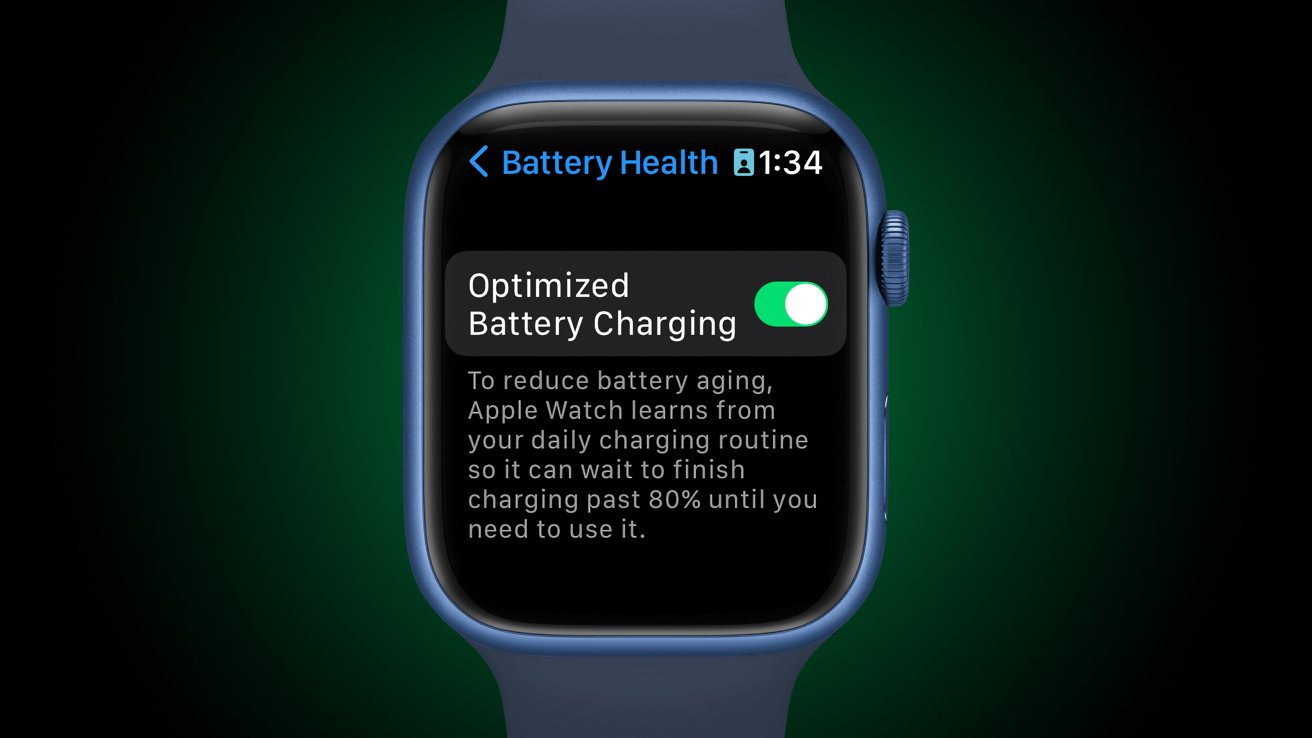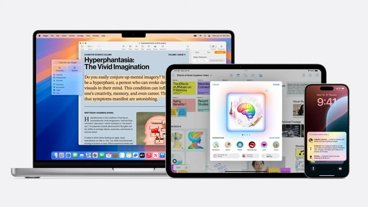Apple Watches running watchOS 9 can learn from users' charging habits to slow battery aging, similar to a feature found on iPhone called optimized battery charging.
Battery health is an increasing concern among Apple users, so the company has implemented measures to ensure device batteries don't age too quickly. One such feature has been added in watchOS 9 called optimized battery charging.
Like the iPhone version of the feature, it learns the charging habit of the user to determine when it is best to fill the battery to 100%. Otherwise, the battery would be charged to 100% right away and then kept at 100% for the entire duration it remained on the charger.
This feature usually kicks in when the device detects it has been placed on a charger for overnight charging. The Apple Watch will be charged to 80% at full speed, then floated there until closer to the user's usual first device pick-up. Then, it charges at full speed to 100%
Minimizing the time the battery is floated at 100% can help prolong battery health. However, this feature does come at a tradeoff since it is not foolproof.
If the user wakes up earlier than expected, for example, the battery might not be fully charged.
Users can toggle this feature off in the Settings app on Apple Watch. Just navigate to Settings, Battery, then Battery Health. The toggle is at the bottom of the screen.
However, it isn't recommended that users turn this feature off.
Instead, users can turn off the optimized battery charging feature when it is actively being used. A message on the Apple Watch will be displayed stating that optimized battery charging is in effect.
Just scroll down and turn it off to ensure the battery reaches 100% as soon as possible for that charging instance.
First time I've seen Optimized Charge Limit on an Apple Watch Ultra in the wild. "[It] learns from your daily usage to determine when to charge to an optimized limit". H/t @RainmanJam for the photo. First seen in watchOS 9.0 GM: https://t.co/oLFabDZbxE https://t.co/t7eVZzQ0A7
— Steve Moser (@SteveMoser) October 31, 2022
The battery optimization feature was first used in iPhone and has trickled down to Apple Watch in watchOS 9. While the feature has been available since watchOS 9 debuted in September, it hasn't been widely publicized or discussed.
Users are only just discovering its existence as it only activates in specific circumstances.
 Wesley Hilliard
Wesley Hilliard







-m.jpg)






 Brian Patterson
Brian Patterson
 Charles Martin
Charles Martin


 Malcolm Owen
Malcolm Owen
 William Gallagher
William Gallagher
 Christine McKee
Christine McKee
 Marko Zivkovic
Marko Zivkovic








2 Comments
I definitely noticed an unusually long battery life on my S5 and S7 since the update, lasting much longer than I expected even though I already optimized a lot of power features.
Meanwhile Climate Change rages on
while we agree to play Whack-A-Mole.
At least we’ll all know what time it arrives.